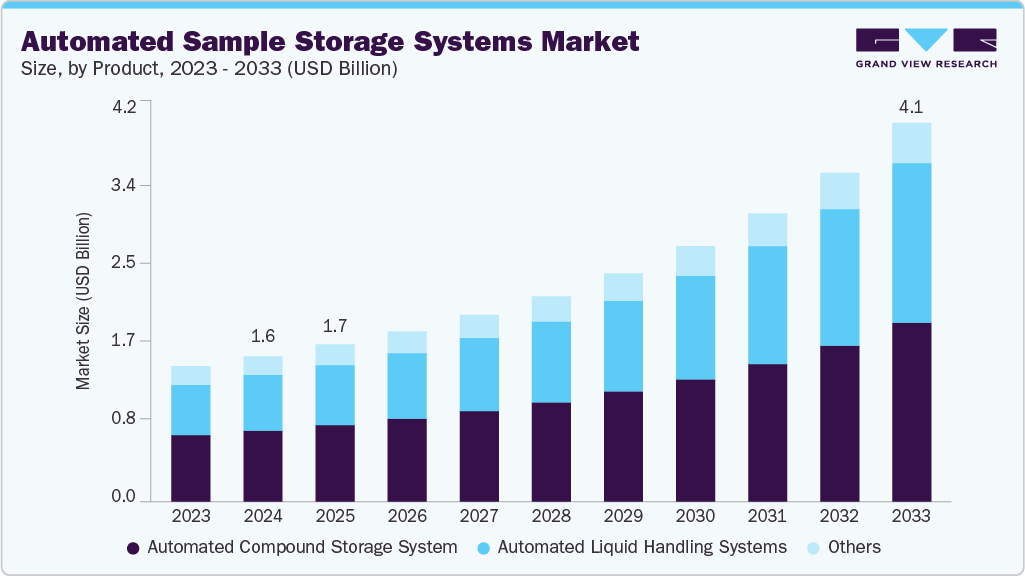Automated Sample Storage Systems Market Size, Share & Trends Analysis growing at a CAGR of 11.63% from 2025 to 2033

The global automated sample storage systems market size was estimated at USD 1.58 billion in 2024 and is projected to reach USD 4.11 billion by 2033, growing at a CAGR of 11.63% from 2025 to 2033. Increasing investments in the pharmaceutical and biopharmaceutical sectors are expected to drive the global market for automated sample storage systems. Moreover, the rising demand for automation across industries to reduce labor costs and increase process efficiency further fuels industry uptake.
Key Market Trends & Insights
- North America automated sample storage systems market held the largest share of 36.83% of the global market in 2024.
- The automated sample storage systems industry in the U.S. is expected to grow significantly over the forecast period.
- By product, the automated compound storage system segment held the largest market share of 48.93% in 2024.
- Based on sample type, the compound samples segment held the largest market share in 2024.
- By end-user, the pharmaceutical and biotech companies segment held the largest market share in 2024.
Market Size & Forecast
- 2024 Market Size: USD 1.58 Billion
- 2030 Projected Market Size: USD 4.11 Billion
- CAGR (2025-2030): 11.63%
- North America: Largest market in 2024
- Asia Pacific: Fastest growing market
Request a free sample copy or view report summary: https://www.grandviewresearch.com/industry-analysis/automated-sample-storage-systems-market-report/request/rs1
The rapid expansion of biobanking and life sciences research is a key driver fueling demand for automated sample storage systems worldwide. With the rise of high-throughput research in genomics, proteomics, metabolomics, and cell biology, research institutions and pharmaceutical companies are generating and handling vast quantities of biological samples. For instance, in February 2025, the UK Biocentre launched Azenta’s automated BioArc Ultra -80 °C storage system in the UK, enhancing sample preservation, sustainability, and operational efficiency across its biobanking operations. These samples, ranging from DNA, RNA, and plasma to tissue and cell cultures, require long-term preservation under strictly controlled conditions to maintain their stability and research value. Manual storage methods are increasingly inadequate for managing such scale and complexity, especially in large biobanks that may house millions of samples. Automated storage systems provide the necessary infrastructure to store, organize, and retrieve specimens with speed, precision, and minimal human error, allowing researchers to focus more on scientific discovery and less on operational logistics.






